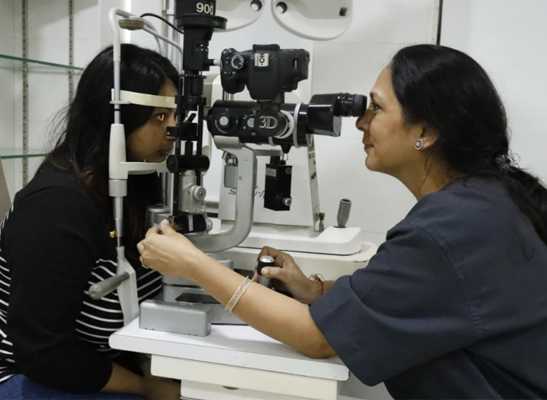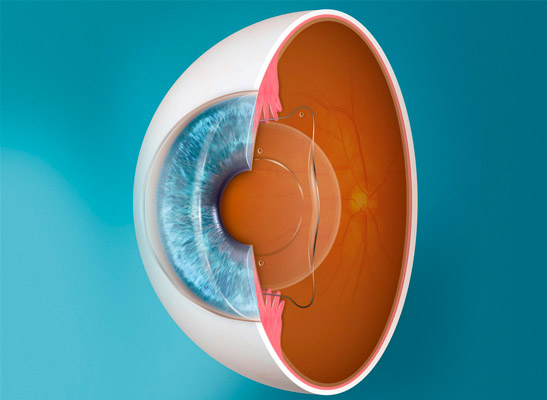ICL- Implantable contact lens-is a tiny little soft contact lens that goes inside the eye and stays there permanently, you don’t have to take them off or clean them, it stays in your eye forever and helps you see clearly every time you open your eye, anytime of the day or night.
When most people consider vision correction, they are usually thinking of LASIK or SMILE. Unfortunately, not everyone is a good candidate for LASIK or SMILE. If you have a very high prescription, or a very thin cornea, then the use of an additional lens can be a very good alternative to laser eye surgery.
Implantable Contact Lens (ICL)
Vision Correction Specialists, Dr. Sujal Shah and Dr. Manisha Shah are dedicated to helping everyone achieve the goal of crystal-clear vision, without the need for glasses or contact lenses. They have remained at the forefront of providing alternatives to LASIK for vision correction.
People with moderate to severe nearsightedness may not be suitable candidates for LASIK or SMILE, but Drs. Sujal and Dr. Manisha Shah can nonetheless offer them freedom from glasses or contacts with the Implantable Contact Lens (ICL).
The Implantable Contact Lens (ICL) has been available for over 25 years and, to date, over 650,000 Collamer lenses have been implanted worldwide. It is a micro-thin implant that is able to correct very high prescriptions, ranging from +8.00D long sightedness to -20.00D short-sightedness, whilst also correcting up to 6.00D of astigmatism. .
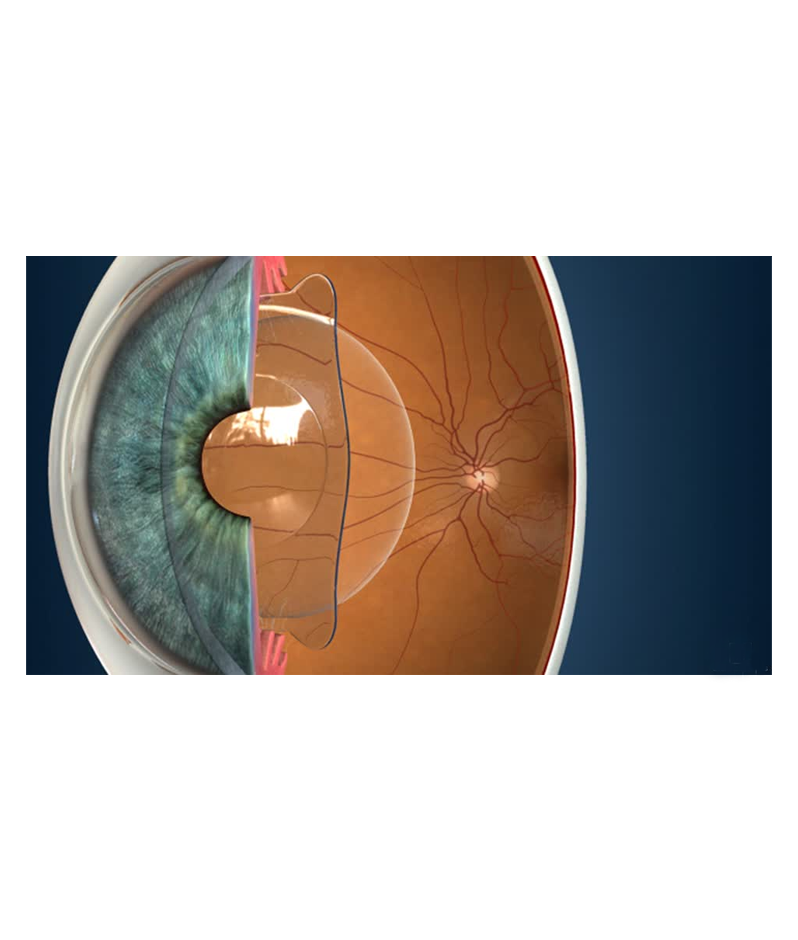
IMPLANTABLE COLLAMER LENS
Made from an advanced collagen based Collamer material (similar to the material your cornea is made of), the lens is designed to be inert and 100% compatible with the natural environment of the eye. Other advantages of the material include UV-A and UV-B protection, anti-reflectivity and exceptional optical clarity.
In a brief outpatient procedure, the ICL is implanted through a small incision and is gently positioned behind the iris and in front of the natural lens. Once implanted, the lens is invisible to the naked eye and cannot be felt within the eye. The procedure takes less than 15 minutes to perform and is often performed under topical anesthesia, meaning patients are able to walk out of the surgical theatre once finished. For patients who are anxious sedation can be administered.
Since many years, other lenses of similar designs made of acrylic material are also available, that can be customized for very complex corrections.
For those with high prescriptions and reading glasses, trifocal models of these lenses can also correct for reading vision, an advantage for patients over 40.
Healing for most patients is so fast that vision improves within hours of the procedure, and many patients return to work the next day.
THE HIGH DEFINITION VISION CORRECTION ALTERNATIVE TO LASIK.
The surgery used to implant the lens is simple and painless: after completely numbing the eye with eye drops, your doctor makes a tiny incision, just large enough to insert the ICL, a small, foldable, injectable lens behind the iris or the “coloured part” of the eye. Your eye heals rapidly. The result gives excellent quality of vision.
FREQUENTLY ASKED Implantable Contact Lens QUESTIONS
ICL is an excellent option for patients who may not be the right candidates for SMILE, LASIK or surface ablation. These patients are nearsighted may have too thin a cornea or a very high spectacle number to do any of the flap or cornea related procedures. ICL offers them a superb quality of vision with optics that is quite impressive so much so that it's suitable for most patients as these implants give them excellent night vision, no glare or aberrations in their vision and absolute precision in the quality of vision.
Most people haven’t heard about ICL, because most people have a spectacle number in the range where we can perform LASIK, Femto-LASIK, SMILE or surface ablation safely and that’s what they undergo. But for a few who need ICL, it is a wonderful option and it gives them a safer cleaner and crisper vision. It’s really like a miracle for those who were visually challenged due to their high spectacle number, when they see so well after the surgery.
The implantable contact lens is wonderful because it’s not visible to the outside the world nor can you see it or feel it. It is not uncomfortable and does not cause irritation or dryness in the eye like your regular contact lenses
The Implantable Contact lens is permanent, it does not need to be replaced and it can stay in the eye as long as it is helping your vision. But the nice thing about it is that it can be removed if ever needed to and the effect can be reversed, unline LASIK and other procedures. When you are older, cataracts are something which we all get, so at the time of your cataract surgery, we simply take out this lens and continue to perform the cataract surgery.
ICL is very safe, but like any surgery there is always some risk. The most common risk is not getting that perfect vision after surgery. We may get close, but the vision may not be perfect. In this case, we can always do a touch up LASIK procedure after a couple of months for sharper vision.
The other complication can be that you may notice a slight glare or halo around headlights at night, it may be mild, but the greater advantage of ICL is that it provides better night vision as compared to other procedures..
The other possible side effect is that you can develop a cataract in life than others. If you develop a cataract earlier, then we just need to remove the ICL and do the cataract surgery to restore your vision.
In some patients, the pressure in the eye can increase. This can generally be managed with eyedrops or a short laser treatment, but, rarely, may require removal of the ICL
THE ICL IS BOTH SAFE AND COMFORTABLE.
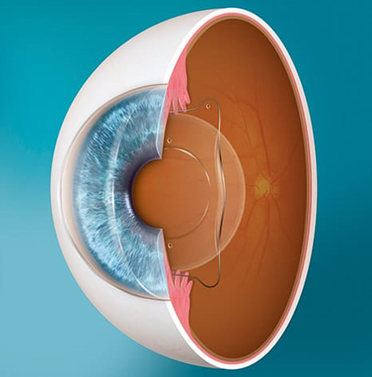
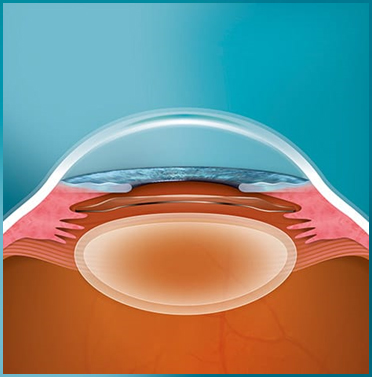
WHO IS A CANDIDATE FOR THE IMPLANTABLE CONTACT LENS?
Implantable contact lens patients are generally people for whom traditional LASIK surgery is not recommended, usually because they are extremely nearsighted, extremely farsighted, or have a cornea that is too thin to safely manage the degree of correction that they need. You should be over 18 before you consider an ICL, and your prescription should be stable for 12 months or longer. After a complete examination Drs Sujal or Manisha Shah will let you know if ICL is the right surgery for you.
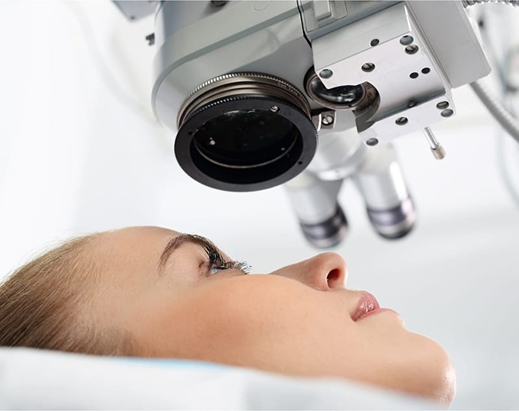
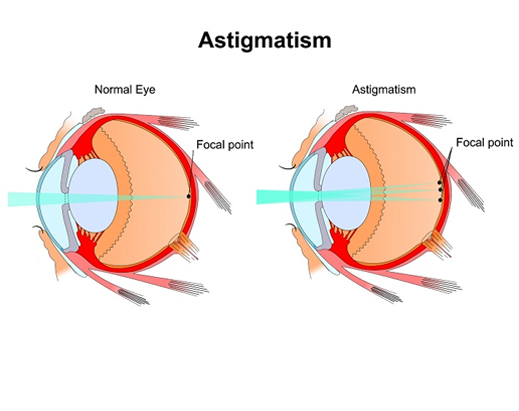
WHAT IF I HAVE ASTIGMATISM?
If you have astigmatism, it means that your eye is oval-shaped instead of perfectly round. Astigmatism can contribute to blurred vision at multiple focal lengths so we need to correct it.
The Toric ICL is an implantable contact lens used to correct myopia (nearsightedness) and astigmatism, so that candidates can now have their myopia and astigmatism safely corrected by a single procedure.WHAT IF I HAVE A COMPLEX NUMBER?
For patients with complicated eyesight that is beyond the range of the ICL to correct, lenses can be tailor made based on individual needs including for those with presbyopia or reading glasses. These lenses have been available for several years and are typically of an acrylic material, unlike ICL.
WHAT DOES THE SURGERY INVOLVE?
Upon arrival in the hospital, and approximately 45 minutes before your surgery, your eye will be dilated. Following administration of anaesthetic eye drops, the area around your eye will be cleaned and a drape applied to ensure a sterile environment. The lens is gently inserted through a small incision in the cornea, and positioned behind the iris and floated on the natural lens. As the procedure does not require any stitches, recovery is often very quick.
The operation is usually performed under a topical anaesthetic (eye drops), is painless and lasts between 10-20 minutes in most cases. Should you feel anxious, then sedation or general anaesthesia are available if required.
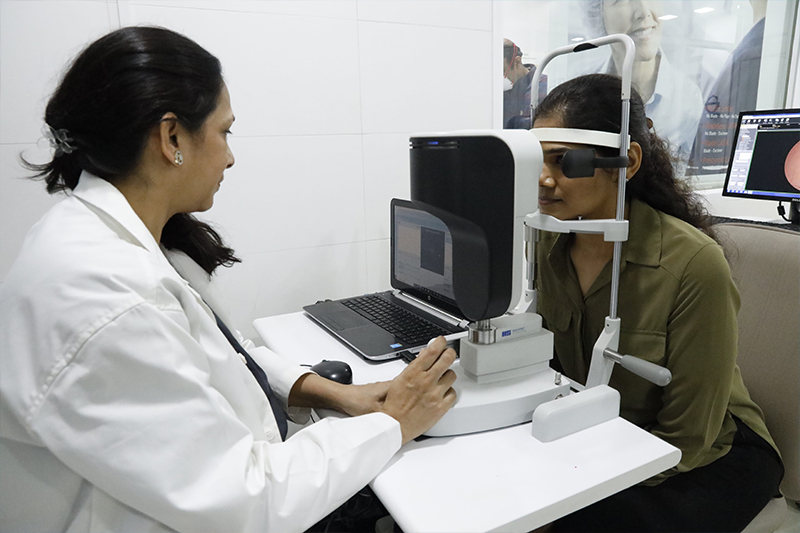
WHAT HAPPENS AFTER THE OPERATION?
After the operation you will rest for a while and then go home. Our staff will go over the aftercare with you. You will be given a dressing pack to swab the eye clean the following day, and some antibiotic and anti-inflammatory eye drops to apply at home after the surgery.
CAN I HAVE BOTH EYES OPERATED ON AT THE SAME TIME?
Whilst the risks of ICL surgery are low, no procedure is risk free. As safety is paramount, we prefer to operate on one eye at a time. We can often perform the procedure for the second eye 2-3 days later.
As there is likely to be a large prescription difference between the operated eye and non-operated eye between procedures, and you are uncomfortable with the imbalance, you may wear a contact-lens to correct the non- operated eye between the two operations.
HOW QUICK IS THE VISUAL RECOVERY?
As the pupil may take 1-2 days to return to normal size, the vision may be slightly blurred for a couple of days. The visual recovery from ICL surgery is very quick however and patients are often amazed at how quick and pain free the recovery period is. .
WHAT ARE THE RISKS OF ICL SURGERY?
As with all forms of eye surgery, ICL surgery has risks and whilst we make every effort to minimise them, they cannot be totally eliminated.
ALTHOUGH UNCOMMON, RISKS INCLUDE:
• Raised pressure: The risk of raised eye pressure following surgery has significantly since the introduction of Centreflow™ technology. Surgery can, however temporarily increase eye pressure requiring further treatment and the pressure of your eye will be carefully monitored post-operatively and treated if required.
• Infection: Whenever an incision is made in the eye it is possible to contract an infection that could potentially cause permanent visual loss. Due to the quality of our operation theatre environment and the precautions we take, we have not yet encountered this is extremely rare problem thus far
• Lens exchange: Although several measurements are made of the eye preoperatively to calculate the correct size of the ICL, the dimensions of the space in which the ICL is placed cannot be visualized directly. This means that occasionally the ICL will need to be replaced with a slightly larger or smaller lens. This is estimated to be required in around <5% of all cases. The ICL is removed and replaced through the same tiny entry port as the original procedure. In our experience, we have not had to exchange an ICL in any patient since the last 20 years.
• Cataract: The ICL is designed to sit above the natural crystalline lens, which remains transparent until the natural onset of cataract in later life. Insertion of an ICL may occasionally cause cataract development at an earlier age. In patients under the age of 45 years this is extremely uncommon, but overall the risk of cataract formation in ICL surgery is estimated at 2%.
.
• Retinal Detachment (RD): Surgery in severely short-sighted eyes carries a risk of retinal detachment. Given that ICL surgery is less invasive than routine cataract surgery, several studies have demonstrated that the risk of RD is no higher than if surgery was not performed. Although RD is a potentially sight-threatening condition and an ophthalmic emergency, approximately 90% of RDs can be repaired surgically if treated in time.
WHAT ARE THE POTENTIAL SIDE-EFFECTS OF ICL SURGERY?
About 10% of patients will experience some unwanted visual effects such as glare, starbursts and halo that may become apparent after any intraocular lens surgery or laser vision correction procedure. All patients will experience these effects immediately after ICL surgery whilst healing but they may rarely persist so special consideration needs to be taken e.g. for professional drivers who drive at night. These symptoms rarely require removal of the ICL.
Schedule Your Consultation & Comprehensive Exam
Find out if you are a candidate from the Vision Correction Specialist.


 +917738273937
+917738273937


